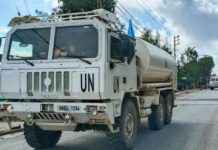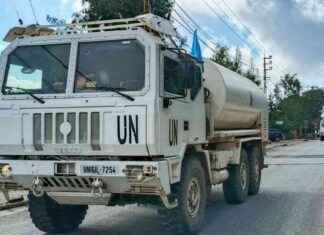In Beijing, the five nuclear powers and permanent members of the UN security Council-the US, Russia, China, France and the United Kingdom – are meeting these days to discuss nuclear disarmament. Time is of the essence. Because next Saturday, the US Ultimatum expires at Russia. The government’s Trump threatened with a termination of the INF Treaty, the nuclear medium-range missiles bans if Moscow fails to meet your requirement.
The United States is demanding that Russia destroyed its new cruise missiles of the type 9M729. They can fly, according to U.S. data, at least, 2600 miles, and would thus be able to meet almost all the main cities in Europe. The Russians speak of a range of 480 kilometers. It should come as no agreement is reached between the two countries, would be with the INF Treaty for Europe’s security the most important arms control agreement in history.
How dangerous is the dispute between the two nuclear powers, a glance at the latest Figures of peace research Institute Sipri. Russia and the United States are owned by nearly 92 percent of all nuclear weapons worldwide. The remaining 8 per cent, France, China, UK, Pakistan, India, Israel and North Korea. The world is so, if you will, a game ball from just nine countries.
14’465 nuclear warheads there are in the world, estimates Sipri. In some countries, it is assumptions. North Korea, for example, could now have up to 20 nuclear warheads, if it is based on the amount of Plutonium, which has the country produced in a research reactor.
In the case of Russia and the United States may refer to Sipri data from public sources. The two countries each have more than 6000 warheads in their arsenals. Only a part of it, however, is also operatively can be used. Russia has more than 1600 warheads already installed on a support and thus practically ready for launch. The US may even resort to 1750. In addition to Russia and the United States, only France and the UK have ready-to-use warheads.
The Rest are warheads in storage or out of operation. Those bearings could also be used but should be installed on a carrier, which takes more time. The retired warheads waiting to be scrapped and disassembled, this may be even in single parts. You would want to use it but still, would be a major effort.
To deter the other side have Russia and the United States, hundreds of nuclear-usable carrier systems, which could shoot your warheads in the air. The most important inter-continental ballistic missiles fired from Land or launch ramps and a range of 5500-15’000 kilometers.
The Americans own more of these long-range rockets than the Russians. The advantage you have in U-boot that are able to, so-called sea-based Intercontinental ballistic missiles shoot. The Russians have more bombers that are atomic can be used as an Overview of the strategic weapons of the two nuclear powers.
“All countries that possess nuclear weapons, have either started to modernize, or long-term programs announced.”Shannon Kile, Sipri
in the light of this comparison, it is difficult to believe that the relaxation of the Situation. In fact, the disarmament of the nuclear powers has fallen in recent years to a Halt. Since 2013, the number of warheads to be reduced to the data of the Federation of American Scientists, a mere 10 percent.
For comparison: Between 1986 and 1991, the number of global warheads that were operationally used, or stock, within the same period to almost 24 percent. Due to the already mentioned INF Treaty, the Russians and the Americans in 1987, signed-shortly after the last peak of the Cold war. It led to a massive disarmament, which no longer runs at the moment but as soon as at the beginning.
in recent years, the number of warheads has fallen slightly. Nevertheless, nothing indicates for the peace researcher from Sipri is currently on a nuclear disarmament. Because the nine nuclear powers renew your Arsenal. “All States that possess nuclear weapons, have either started to modernize, or long-term programs announced,” said Shannon Kile from Sipri at the announcement of the final Numbers.
The United States want to invest in sites according to their own figures up to 2026, approximately $ 400 billion in the development of warheads, missiles, delivery systems and production. By 2046, the expenditure could amount to $ 1.2 trillion. The Russian nuclear program is a long-term modernization process is also used, in which the cost is not clear.
The current approach is contrary to the disarmament agreement “New Start”, the then President of the United States and Russia, Barack Obama and Dmitry Medvedev, in 2010, signed. “This renewed focus on the strategic importance of nuclear deterrence is a very worrying Trend,” says Sipri. Real progress towards nuclear disarmament had so far.
(editing Tamedia)
Created: 30.01.2019, 16:10 PM








